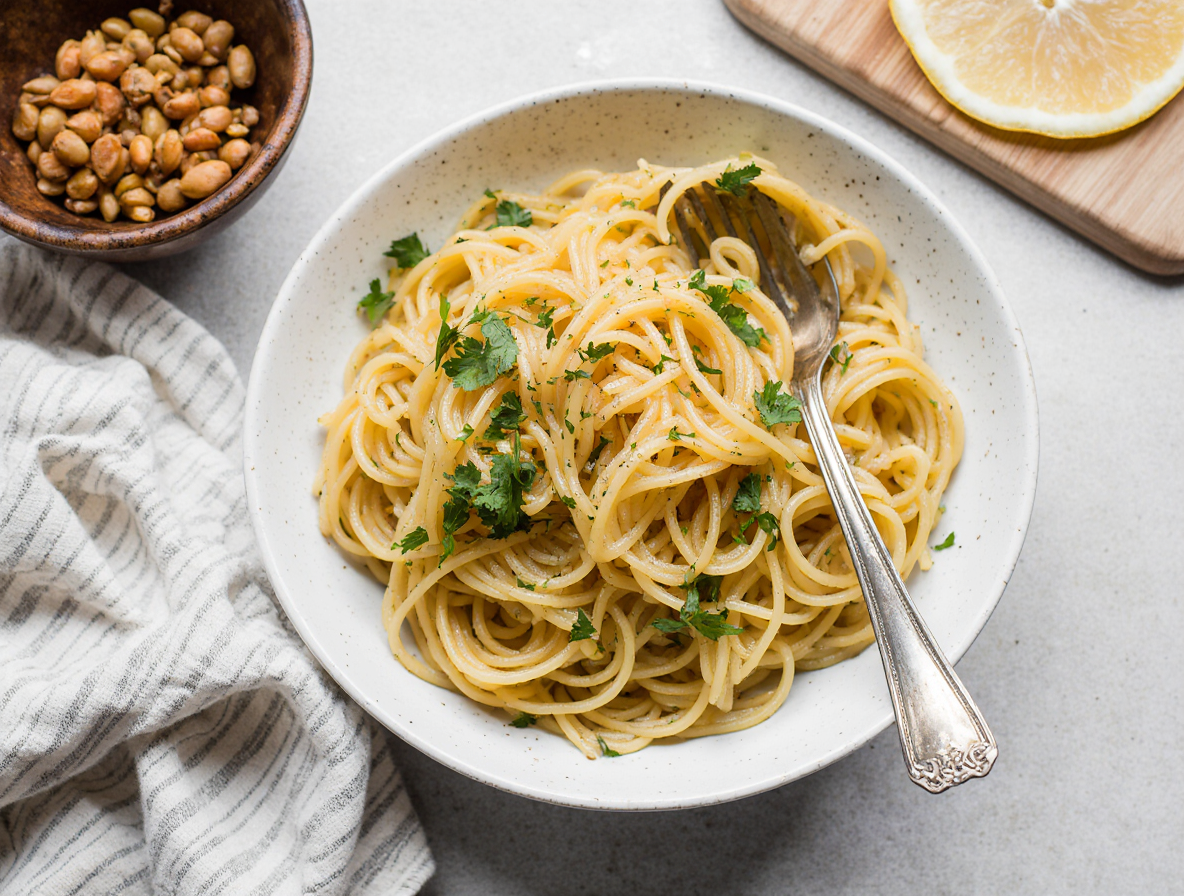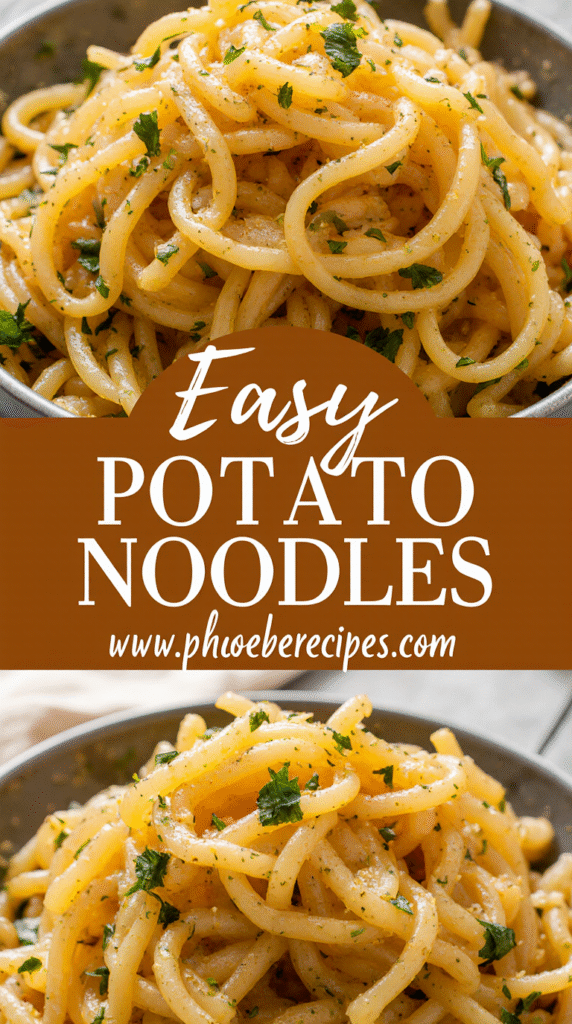How to Make Perfect Potato Noodles: A Foolproof Guide for Beginners
Thick, chewy potato noodles are surprisingly easy to make with just two simple ingredients. Despite their simplicity, these bouncy noodles deliver an impressive “noodle-per-mouth ratio” that makes them incredibly satisfying to eat. When tossed in a garlicky, savory chili oil sauce, they transform into a mouthwatering dish that’s perfect for both beginners and experienced cooks alike.
If you’ve never tried making potato noodles at home before, you’re in for a treat. Known as tǔ dòu fěn in Chinese cuisine, these thick, round noodles are commonly used in hot pots, soups, stews, and stir-fries. The magic behind a perfect potato noodle recipe lies in the combination of yellow potatoes and potato starch. Additionally, the potato starch provides the distinctive bounce and chewiness, while the potato itself contributes the flavor. In this foolproof guide, I’ll walk you through how to make potato noodles from scratch, including the essential techniques for achieving that ideal texture that makes these noodles so special.
Choosing the Right Ingredients for Potato Noodles
The foundation of successful potato noodles begins with selecting the right ingredients. Let’s examine what makes certain ingredients work better than others for creating that perfect chewy texture.
Why yellow potatoes work best
Yellow potatoes are essential for making authentic potato noodles. Their natural properties create the ideal texture and flavor that other varieties simply can’t match. Several excellent yellow potato options include:
- Yukon Gold
- Agria
- Carola
- Delta Gold
- Inca Gold
- Keuka Gold
- Michigold
- Saginaw Gold
Unlike russet potatoes which are primarily starchy, yellow potatoes have a slightly waxy texture that contributes to the noodles’ structure. This waxy quality helps the noodles hold their shape during cooking without falling apart. Furthermore, yellow potatoes offer a naturally buttery, slightly sweet flavor that enhances the final dish without overpowering other ingredients.
Potato starch vs. cornstarch
Potato starch plays a crucial role in achieving the distinctive bouncy, chewy texture that makes these noodles special. Although both potato starch and cornstarch appear similar, they behave quite differently in recipes.
Potato starch can withstand higher temperatures than cornstarch, though not for extended periods. The secret lies in adding it toward the end of the cooking process. Moreover, potato starch creates a softer, more pliable dough that’s easier to handle and maintains its shape better than cornstarch.
One tablespoon of potato starch contains 10 grams of carbohydrates and 40 calories, making it slightly more calorie-dense than cornstarch. Nevertheless, it’s the superior choice for noodles because it delivers that sought-after chewy, slippery texture that cornstarch simply cannot replicate.
Important note: Never substitute potato flour for potato starch! Though they sound similar, potato flour is made from whole dehydrated potatoes and turns sticky and glue-like when used as a thickener.
Optional ingredients for flavor and texture
Beyond the essential components, you can enhance your potato noodles with various additions. Since potato noodles have a relatively mild, neutral flavor, they serve as an excellent canvas for bold seasonings and mix-ins.
A small amount of vegetable oil in the dough helps keep it moist and makes processing easier without adding any oily taste to the finished noodles. For those with dietary restrictions, these noodles are naturally vegan, dairy-free, and nut-free. They can also be made gluten-free by pairing them with appropriate sauces.
For added protein and vegetables, consider mixing in:
- Smoked tofu or chickpeas
- Cabbage or baby bok choy
- Broccoli or other quick-cooking vegetables
Ultimately, the beauty of potato noodles lies in their versatility. Their distinct chewy, bouncy texture pairs exceptionally well with bold flavors, particularly spicy dishes.
Step-by-Step: How to Make the Dough
Creating perfect potato noodle dough requires precise technique and timing. The process might seem simple, yet each step significantly impacts the final texture of your homemade potato noodles.
Boil and mash the potatoes
First of all, select medium-sized yellow potatoes, then peel and cut them into quarters. Place them in a pot, cover completely with water, and bring to a boil over high heat. Once boiling, reduce to a gentle simmer and cook until the potatoes become fork-tender, approximately 15-18 minutes.
After cooking, drain the potatoes thoroughly. For optimal results, you can place them in a preheated oven for about 5 minutes to remove excess moisture. This extra step ensures your potato noodle dough won’t be too wet.
Transfer the hot potatoes to a heatproof bowl and mash them immediately while still warm. Use a potato masher or fork to create a completely smooth consistency with absolutely no lumps. The smoothness of your mashed potatoes directly affects the texture of your final noodles.
Mix in potato starch and water
Once your potatoes are perfectly mashed, add salt and begin incorporating the potato starch. The heat from the potatoes plays a crucial role here – it partially cooks the starch, gelatinizing it and making it stretchier. This heat-activated process gives potato noodles their distinctive chewy texture.
For a starch-only version, mix 1 cup of potato starch with salt and vegetable oil in a bowl. Subsequently, add boiling water (at least 212°F/100°C) a splash at a time, stirring between additions. The water must be truly boiling – this temperature requirement is non-negotiable for proper gelatinization.
Alternatively, when working with mashed potatoes, gradually mix in the potato starch followed by room temperature water until you achieve a cohesive mixture.
Knead until smooth and elastic
Transfer your dough to a work surface lightly dusted with potato starch. In fact, the kneading process is where the magic happens – work the dough continuously for 8-10 minutes. Initially, the dough may feel rough or uneven, but perseverance pays off.
As you knead, the gluten strands become more organized and elongated, creating that perfect bouncy texture characteristic of authentic potato noodles. The properly kneaded dough should be extremely stretchable, smooth, and without any small bumps.
To test if your dough is ready, poke it gently – if no residue sticks to your finger, you’ve achieved the right consistency. At this point, your potato noodle dough is ready for shaping and cooking.
Shaping and Cooking the Noodles
Now that your dough is ready, the shaping and cooking processes require careful attention to achieve that signature chewy texture of authentic potato noodles.
Rolling and cutting the dough
Once your potato noodle dough is prepared, dust your work surface with potato starch to prevent sticking. There are two main approaches to shaping the noodles. First, you can roll the dough into a log approximately the size of your forearm, then cut it into 16 equal pieces. Alternatively, roll or pat the dough into a ¼-inch thick rectangle and slice it into ¼-inch wide strips.
For the hand-rolled method, work with one piece at a time while keeping the rest covered with a damp towel to prevent drying. Roll each piece into a snake about the thickness of your index finger, approximately chopstick length. If the dough cracks as you roll, lightly dampen your hands and try again.
Important tip: Avoid rolling the noodles too thin, as they’ll become fragile and break easily. Chinese potato noodles are known for their chewy texture and thicker shape, ideally around ½-inch thickness.
Boiling the noodles properly
Bring a large pot of water to a rolling boil. The pot should be wide enough for the noodles to be completely submerged without excessive curling. Gently slide the noodles into the boiling water one at a time, ensuring they’re fully submerged immediately.
Once all noodles are in, stir gently to prevent sticking. Reduce heat to medium and cook until the noodles float to the surface, approximately 1-3 minutes for thinner noodles or 5-6 minutes for thicker ones. For the ultimate test, try a noodle to check if it’s fully cooked through.
Cooling and draining tips
Immediately after cooking, prepare a large bowl of cold water or an ice bath nearby. Using a slotted spoon, carefully transfer the cooked noodles directly into the cold water. This rapid cooling process stops the cooking and helps preserve the noodles’ chewy texture.
The potato noodles are extremely soft and require gentle handling. Use tools like a long knife, spatula, or slotted spoon rather than tongs or chopsticks which might tear them. After cooling for about a minute, drain the noodles thoroughly.
For serving, either use immediately or toss with a small amount of oil to prevent sticking if you’re preparing them ahead of time. These noodles hold up remarkably well in soups and stews without losing their texture.
Making the Perfect Sauce and Serving Tips
The sauce truly elevates potato noodles from simple to spectacular. Once you’ve mastered the noodle-making process, it’s time to focus on creating the perfect accompaniment that will bring your dish to life.
Garlic chili oil vs. Korean spicy sauce
Garlic chili oil, inspired by Chinese You Po Mian (油泼面), brings intense flavor primarily from raw garlic that gets mellowed when hot oil is poured over it. First and foremost, this sauce combines minced garlic, green onions, chili flakes, and soy sauce with a splash of black vinegar for tanginess. The magic happens when sizzling hot oil is poured over these aromatics, releasing their flavors.
Alternatively, Korean-style gochujang sauce offers a different flavor profile. This fermented red chili paste delivers a sweet, savory, and spicy punch all at once. To create this sauce, whisk together gochujang with soy sauce, rice vinegar (or mirin), and a touch of honey or sugar. In contrast to chili oil, this sauce doesn’t require the hot oil pouring technique, making it more approachable for beginners.
How to pour hot oil safely
Pouring hot oil requires caution. Heat oil in a small pot until it’s shimmering or reaches approximately 350°F. Importantly, prepare all aromatics and seasonings in a heat-resistant bowl beforehand.
Safety tips:
- Aim the hot oil directly at the aromatics (garlic, chili flakes)
- Pour slowly from a safe distance to avoid splatters
- Never lean directly over the bowl while pouring
- Keep children away from the preparation area
The oil will sizzle dramatically upon contact with the ingredients – this reaction is crucial as it partially cooks the garlic and releases the flavor compounds from the spices.
Toppings and garnishes to try
Fresh toppings add both visual appeal and textural contrast to potato noodles. Chopped green onions and cilantro are particularly complementary, adding freshness that balances the rich, spicy sauce. Toasted sesame seeds contribute a pleasant nuttiness and slight crunch.
For a more substantial meal, consider adding:
- Protein: fried egg, ground meat, tofu, or shrimp
- Vegetables: bok choy, yu choy, bean sprouts, or mushrooms
- Crunchy elements: crispy fried shallots or garlic chips
Consequently, potato noodles can be served either hot or cold. For cold noodles, simply rinse them under cold water after cooking and drain thoroughly. Regardless of temperature, serve immediately after saucing to enjoy the optimal texture before the noodles firm up.
Conclusion
Mastering potato noodles certainly doesn’t require professional culinary skills. Throughout this guide, we’ve seen how this deceptively simple dish transforms basic ingredients into something truly special. Yellow potatoes combined with potato starch create that distinctive bouncy texture we can’t find in other noodle varieties.
Whether you choose the aromatic garlic chili oil or the sweet-spicy Korean gochujang sauce, potato noodles serve as the perfect canvas for bold flavors. Additionally, their versatility makes them suitable for countless variations – add your favorite proteins, vegetables, or crunchy toppings to create a personalized dish.
Remember that success lies in the details. Proper kneading develops the elasticity these noodles need, while careful boiling and cooling preserve their signature chewiness. Though the process might seem intimidating at first, following the steps outlined above will help you achieve professional-quality results.
Potato noodles represent comfort food at its finest – satisfying, adaptable, and surprisingly straightforward to prepare. The next time you crave something different from your typical pasta, give these chewy potato noodles a try. Your taste buds will thank you for the delightful textural experience that makes this dish so uniquely satisfying.
FAQs
Q1. What are the key ingredients for making potato noodles? The main ingredients for potato noodles are yellow potatoes and potato starch. Yellow potatoes provide the ideal texture and flavor, while potato starch contributes to the distinctive bouncy and chewy texture of the noodles.
Q2. How do you achieve the perfect texture for potato noodles? To achieve the perfect texture, knead the dough thoroughly for 8-10 minutes until it becomes smooth and elastic. This process organizes the gluten strands, creating the characteristic bouncy texture of authentic potato noodles.
Q3. What’s the best way to cook potato noodles? Cook potato noodles in boiling water until they float to the surface, which typically takes 1-3 minutes for thinner noodles or 5-6 minutes for thicker ones. After cooking, immediately transfer them to cold water to stop the cooking process and preserve their chewy texture.
Q4. Can potato noodles be served hot or cold? Yes, potato noodles can be served both hot and cold. For cold noodles, simply rinse them under cold water after cooking and drain thoroughly. Regardless of temperature, it’s best to serve them immediately after saucing to enjoy the optimal texture.
Q5. What are some recommended sauces for potato noodles? Two popular sauce options for potato noodles are garlic chili oil and Korean-style gochujang sauce. The garlic chili oil combines minced garlic, green onions, chili flakes, and soy sauce, while the gochujang sauce offers a sweet, savory, and spicy flavor profile. Both complement the neutral taste of potato noodles well.


